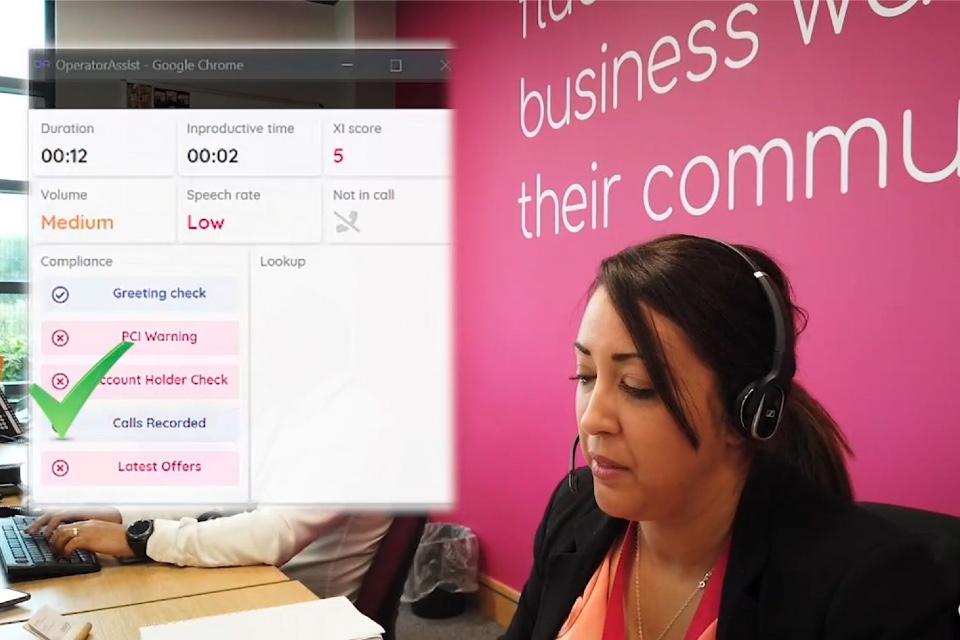ANALYTICS MONTH: From enhanced customer insights to better QA – How AI and machine learning are impacting contact centre analytics

Artificial Intelligence (AI) and Machine Learning (ML) are pioneering a significant analytics revolution for contact centres. These advanced technologies are transforming the way contact centres operate, offering unprecedented insights into customer behaviour, enhancing service quality, and driving operational efficiency. Here’s an exploration of how AI and ML are at the forefront of the analytics revolution in […]
ANALYTICS MONTH: Leveraging insights from AI and Ml while protecting privacy

As businesses strive to enhance customer service, drive efficiency, and gain competitive advantage, the application of analytics within contact centres has become increasingly sophisticated. Here’s a look at the key trends shaping the use of analytics tools in the UK’s contact centre industry. Real-time Analytics for Immediate Insights: One of the most significant trends is […]
If you specialise in Analytics for contact centres we want to hear from you!

Each month on Contact Centres Briefing we’re shining the spotlight on a different part of the customer care market – and in February we’re focusing on Analytics. It’s all part of our ‘Recommended’ editorial feature, designed to help customer care industry buyers find the best products and services available today. So, if you’re a supplier of […]
Do you specialise in Analytics for contact centres? We want to hear from you!

Each month on Contact Centres Briefing we’re shining the spotlight on a different part of the customer care market – and in February we’re focusing on Analytics. It’s all part of our ‘Recommended’ editorial feature, designed to help customer care industry buyers find the best products and services available today. So, if you’re a supplier of Analytics solutions and […]
Do you specialise in contact centre Analytics? We want to hear from you!

Each month on Contact Centres Briefing we’re shining the spotlight on a different part of the customer care market – and in February we’re focusing on Analytics. It’s all part of our ‘Recommended’ editorial feature, designed to help customer care industry buyers find the best products and services available today. So, if you’re a supplier of Analytics solutions and would […]
WEBINAR: How AI is delivering a new generation of CX Analytics

Contact centres spend significant resources evaluating agent effectiveness and customer sentiment, but don’t always know if they are capturing the right data, creating the right KPIs and sharing the available analytics to allow them to improve agent and customer metrics. Has your approach to analytics been re-evaluated to take advantage of today’s cloud and AI […]
‘Game-changing’ real-time speech analytics solution boosts contact centres’ sales, service and compliance standards

Avoira is forecasting a sales surge for its Xdroid speech analytics solution after the AI-powered technology was hailed as a game-changer by one of the UK’s top 50 personal insurance brokers. The technology solutions specialist – which is showcasing Xdroid at the Contact Centre & Customer Service Summit – is also expecting increased adoption of […]
How – and Why – to Analyze Sentiment

By Abby Monaco, Senior Product Marketing Manager, NICE Nexidia “I have terrible news,” your boss wrote in an email late last night. “The project has officially been delayed.” Without any additional context, this news could be cause for joy – you’ll no longer be working all weekend to deliver on a deadline – or significant […]
Do you specialise in Analytics solutions for contact centres? We want to hear from you!

Each month on Call Centres Briefing we’re shining the spotlight on a different part of the customer care market – and in February we’re focusing on Analytics solutions. It’s all part of our ‘Recommended’ editorial feature, designed to help customer care industry buyers find the best products and services available today. So, if you’re a supplier of Analytics solutions […]
Fast call centre analytics ‘vital’ in the new WFH normal

The immediate provision of accurate speech analytics is becoming increasingly vital as contact centres increasingly look to maintain work from home (WFH) operational models. That’s the view of leading call centre solution provider Avoira, which is anticipating heightened interest in the technology from delegates attending the virtual Contact Centre & Customer Service Summit. The company […]

